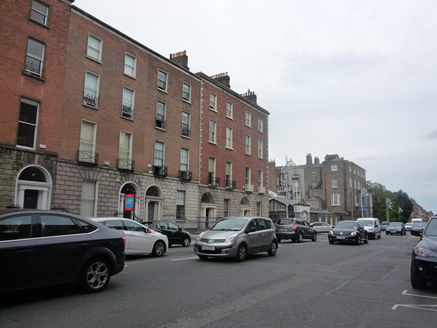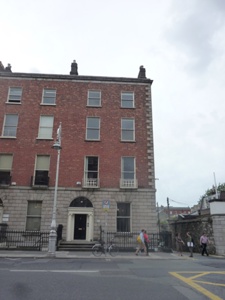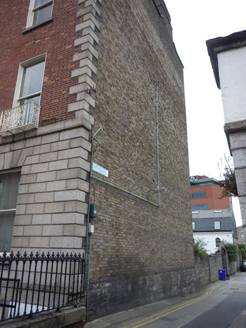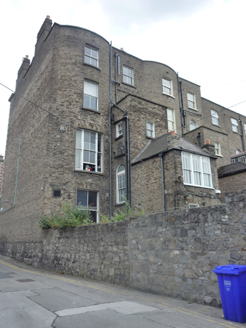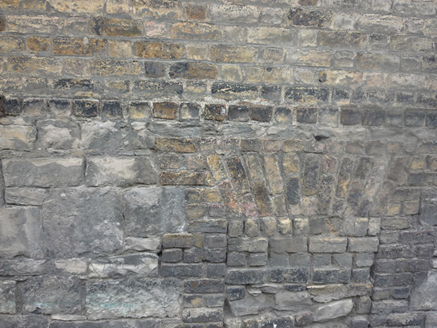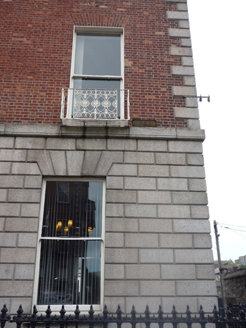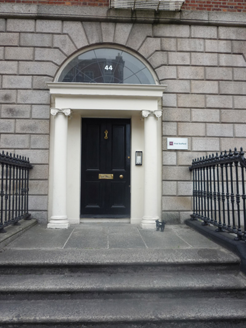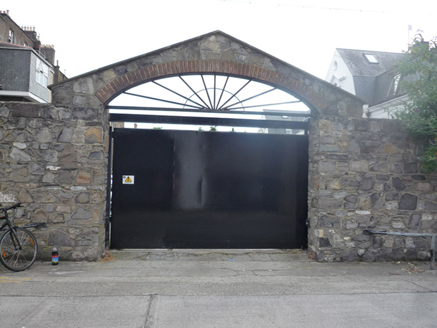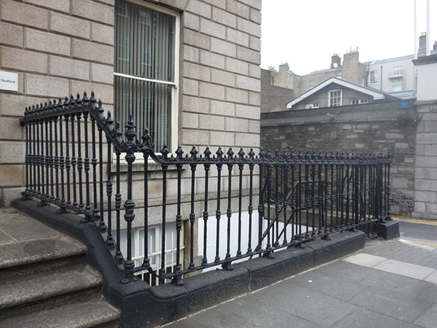Survey Data
Reg No
50930209
Rating
Regional
Categories of Special Interest
Architectural, Artistic
Original Use
House
In Use As
Office
Date
1840 - 1860
Coordinates
316482, 232929
Date Recorded
02/07/2015
Date Updated
--/--/--
Description
End-of-terrace four-storey two-bay former townhouse over basement, built c. 1850, with bow to rear elevation, and two-stage late nineteenth-century return to rear. Now in use as offices. Pitched slate roof concealed by ashlar granite parapet with cornice, four brick chimneystacks (two shared with adjoining building), parapet gutters and recent rainwater goods to rear. Hipped slate roof to lower return, with pair of small brick chimneys, each with single replacement clay pots. Red brick walls in Flemish bond over rusticated granite ground floor, having rusticated quoins to end-of-terrace corner. Ashlar stone with granite stringcourse to basement. Brown brick walling to rear and side elevation over uncoursed squared masonry basement level. Square-headed window openings with slightly projecting rendered reveals, brick voussoirs, projecting granite sills and one-over one timber sash windows with horns. First floor windows having decorative cast-iron balconettes resting on granite platband. Third floor windows diminish in height. Three-over-three timber sash to basement with uPVC insert, block-and-start granite surround and metal grille affixed to sill. Rear elevation has two-over-two timber sash windows; first floor window flanked by two-over-two side-lights. Round-headed-margin-paned window to return and large tripartite six-over-six sash window with arched top lights. Round-headed door opening containing projecting entablature supported on Ionic columns, having replacement fanlight, and timber four-panelled door accessed by three bull nosed granite steps. Original cast-iron railings to basement well on moulded granite plinth. Cast-iron boot scraper to entrance and coal-hole cover to pavement. Rebuilt boundary wall and carriage-arch to rear.
Appraisal
A fine Georgian-style former townhouse, built as one of a pair with No. 43. According to Casey (2005) they have some of the richest interiors in Fitzwilliam Place, and with 'cast-iron stair balustrades and the rooms on the first-half landings have engaged columns and charming original painted-glass panels.’ Characterised by restrained external detailing, vertical massing and well-balanced proportions, the pair forms an integral part of Fitzwilliam Place. The retention of the boundary cast-iron railings and curved granite steps serve to enrich and further enhance the street setting. Although the streetscape is largely cohesive in appearance, slight variations between the groups of houses on Fitzwilliam Place is illustrative of the incremental nature of speculative development during this period.
